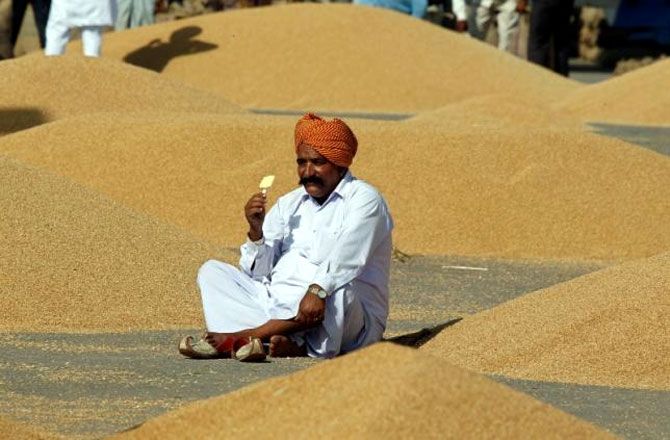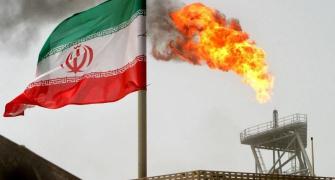India’s wheat exports could touch a new record of 10 million tonnes in 2022-23, up from a record seven million tonnes in the current financial year, if global market conditions remain choppy and no curbs are imposed on outbound shipments.

That is the bullish estimate by officials from global trading firms and market watchers who say the Russia-Ukraine crisis has not only attracted global buyers to India but also pushed the price of Indian wheat from around $320 per tonne (FOB) to over $360 per tonne in less than 10 days.
Food secretary Sudhanshu Pandey told reporters that wheat exports till February-end have already reached 6.6 million tonnes and by the end of March, outbound shipments will reach seven million tonnes.
“India is largely a spot market for global wheat and our assessment is that even if the current bullish phase wanes in the coming months and there is resolution of the Russian crisis, then too prices might not go down much below $330-$335 per tonne (FOB), which should help in pushing more wheat largely to Asian and Arab countries,” said Pandey.
Between April-June 2022 (considered the three best months for exporting Indian wheat), he said there was every possibility that around 3-4 million tonnes of wheat could be exported and the hope was that, in the subsequent quarters, the momentum would remain.
Assuming an exchange rate of Rs 76.42 per dollar, a FOB rate of $360 per tonne for Indian wheat translates into a price of Rs 2752 per quintal and a FOB rate of $400 per tonne translates into a price of Rs 3056 per quintal for Indian wheat in the ports.
“Our rough calculations show that if the FOB price of Indian wheat is around $360 per tonnes, it translates into an average ex-mandi rate of Rs 2100-Rs 2300 per quintal in central and west India after considering all incidentals.
"Now, if the rate further rises to $400 per tonne (FOB) then it will ensure an average ex-mandi rate of almost Rs 2800-3000 per quintal,” a trader said.
Traders discounted any possibility of the Centre using the opportunity provided by global markets to liquidate some of its inventories, since traditionally the government has not been an efficient exporter.
“The gap between the next Indian wheat crop that will start hitting the market in the coming 15-20 days and the new crop from Ukraine that will come around July should be fully tapped because Ukraine's production is also big,” said the trader.
Bumper crop for farmers
The crisis-driven rise in prices has not left farmers untouched. The early harvest price of wheat in several mandis of Madhya Pradesh, where the new crop has started trickling in during the last few days, is being sold at a price which is at least Rs 100-300 per quintal higher than the 2022-2023 Minimum Support Price (MSP) of Rs 2015 per quintal.
In Mandsaur mandi, the price for the new wheat crop is around Rs 2200 per quintal.
In Ratlam mandi, a few of lots were sold at Rs 2300 per quintal.
“New crop arrivals have started in some mandis of Malwa and Nimar region of Madhya Pradesh though in small quantities and the prices quoted are above MSP.
"But whether this position remains when the arrivals start gathering pace after Holi remains to be seen,” one trader based in Mandsaur told Business Standard.
In Gujarat, where the new crop has started arriving, some reports said that as much as Rs 2400-2500 per quintal is being quoted in some mandis.
India is expected to harvest a record 111 million tonnes of wheat in April-March which is almost two million tonnes more than this year.
The potential bottleneck
The only bottleneck in achieving the export potential of 10 million tonnes next year, apart from sudden changes in global conditions, is if the Centre curbs exports to enable it to achieve the FY‘23 annual wheat procurement target of 44.4 million tonnes.
Reports said the Centre might not have to procure the full target of 44.4 million tonnes of wheat if private players step up their purchases.
“Ideally, the Centre should just sit back and relax and let the private players do all the purchases of wheat if they are willing to pay a price which is higher than the MSP.
"But who knows what the thinking within the government is,” said a global trading firm official.
He said the government should purchase the minimum required to meet its PDS needs next year while leaving the market open for private players which will ensure a higher price to farmers.
“For PDS, the Centre should purchase from Punjab and Haryana where private trade’s interference is less due to high taxes and let private players purchase from Madhya Pradesh and Uttar Pradesh at above MSP rates,” the official said.
India’s wheat stocks in the Central pool as on February 16 were pegged at around 26 million tonnes - 248 per cent more than the quantity required to be stored as on April 1 each year.
Rising price of fertiliser
Among the various items which are falling prey to the Russian conflict are the rising prices of phosphate and muriate of phosphate (MOP) fertilizer.
Belarus, an ally of Russia, is one of the leading suppliers of phosphate and MOP to the Indian markets.
In the financial year 2021-22, 17.7 per cent of the 5.1 million tonnes of MOP imported into India came from Belarus.
Canada and Jordan are the other two main suppliers of MOP which is 100 per cent imported.
Trade sources said that after the conflict broke out in Ukraine, the price of MOP imports under contract till November 2021 at around $280 per tonne jumped to $500 per tonne (a rise of 78.57 per cent).
As a reaction, the price of NPKS (another fertilizer variant which uses potash) has also risen.
The raw material cost of producing fertilizers is expected to spike sharply due to rising LNG prices.
“Either the retail price of fertilizers per bag has to rise sharply or the government's subsidy burden has to go up because the current rates are unsustainable for the industry,” a senior industry official said.










